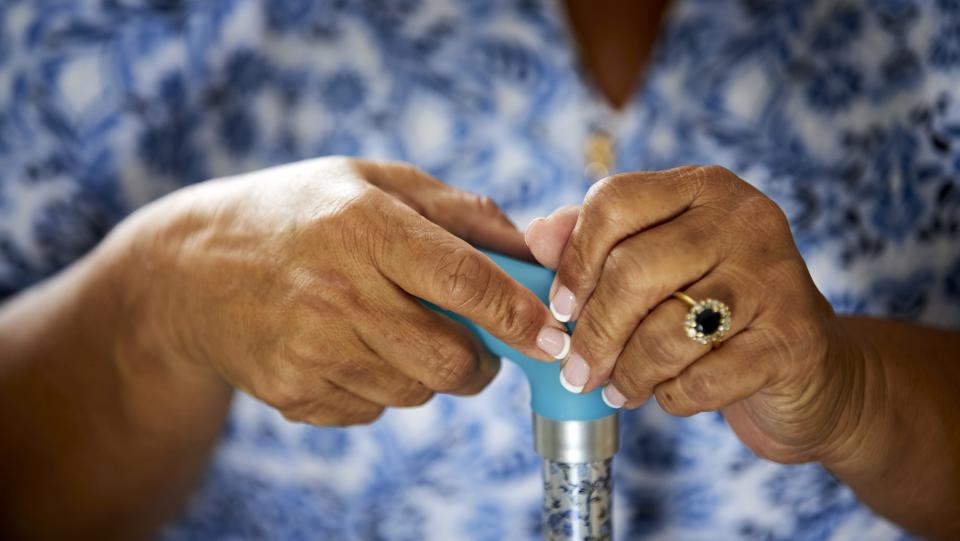Here's How to Spot the Best Deals on Pre-Owned Items + Get More for Your Money
Want to save your money and cut costs by buying used and pre-owned versions of items you need, but fear you’ll end up wasting your money on duds? No one wants to fall for a scam when on the hunt for a pre-loved item. Our product experts reveal their secrets to spotting the best pre-owned products so you can save cash without worry. Keep reading for their bargain insights:
Spot a reliable used car
Good news: After several years of used car prices rising, reports show that prices are finally coming down, making it a great time to shop around. Sure, you know it’s important to get any used car, SUV or truck you’re considering checked out by an independent auto technician.
But, there’s also a simple trick that can help you pick a vehicle with the best chances of lasting you for years and years: “Look through listings for used vehicles that have lots of mileage on them,” advises Ivan Drury, automotive insights expert for Edmunds.com.

“This is a clue that these are the most reliable makes and models because they’ve lasted a long time,” he explains. “Vehicles that are unreliable typically don’t get driven as much since they’re in the shop a lot and people don't trust them to go long distances.”
The average vehicle racks up more than 13,000 miles on average per year, so just multiply this number by the age of the car to figure out how much it’s been driven. “Then look for a similar vehicle that has fewer miles on it.” Based on how far the other versions of it have gone, there’s a good chance you’ll get as many miles out of yours, too.
Related: 9 Ways to Work From Home for AAA — And How to Get Paid as You Train
Pay less for long lasting furniture and save on pre-owned items
Buying used furniture pieces from consignment stores, thrift stores and online marketplaces (like eBay.com, Facebook.com/marketplace and Nextdoor.com) can cut your costs by 30% to 70% versus buying them new.
One way to ensure you get a table, chair or sofa that lasts is to opt for those made of durable materials (such as solid wood, glass and steel) over particleboard and wood veneer.
Another way: Look for a “maker’s mark," advises Willow Wright, owner of Urban Redeux vintage and antique store in Alexandria, Virginia. Common on furniture made before 1980, it indicates who made the piece.
“This will give a lot of information about the manufacturer, and many times the name of the collection,” she says. Once you find the mark (which could be under a cushion or on a side panel in a drawer), look it up online.
You’ll likely find out more about the manufacturer, for example, if they were known for their sturdy pieces. Also smart: Check for mold since moisture exposure can shorten the lifespan of wood and fabric.
“Mold on furniture can look like white or dark spots,” notes Wright. And inspect moving parts. “Look for drawers that move smoothly since sticky drawers can sometimes be an indicator of moisture damage,” she says.
Get a deal on works-likes-new electronics
You can save a bundle on laptops, smartwatches, tablets and other electronics by buying them used. But how can you know you’re getting a device that works as well as a new, store-bought version? Start by examining the condition of the item.
“The overall physical appearance can offer some insight into how well the device was cared for,” says Robert Nelson, a tech expert for the electronics reselling marketplace Swappa.com.
“If the device has a lot of dents, large scratches or cracks, that suggests it wasn’t always handled with care. And a device that wasn’t handled with care may also have functionality issues.”
Related: The Polaroid Camera Has Made a Comeback — And Yours Could Be Worth $2,000
Also smart: “Ask the seller whether the device has been repaired, and if it has, where the repair was done,” advises Nelson.
“Determining where the device was repaired can reveal some clues. For example, if you’re shopping for an iPhone that had a screen repair, and that repair was done at an Apple store, you know you’re getting a quality repair with quality replacement parts.”
Tip: “It’s always a good idea to read reviews for the seller and for the marketplace,” observes Nelson. “If the seller and marketplace have good reviews, that will dramatically increase your chances of getting a good device that will last you well into the future.”
Nab a bargain on genuine jewelry and save on pre-owned items
Not only can opting for pre-owned gold, platinum and silver jewelry save you hundreds, but it can also help you find unique pieces that you won’t find anywhere else. But before you hand over your cash, it’s important to know if the jewelry’s precious metal and gems are authentic.
One way to find out: “Ask if the piece has any lab certificates or other accreditation paperwork,” advises Jocelyn Zimmer, president of Zimmer Brothers Jewelers. “This can determine the authenticity of the metal or stone.”

No paperwork available? “To determine if metals are genuine, you can look for a stamp describing the metals used,” says Zimmer. “For a ring, this would be on the inside. For a necklace, it may be on the clasp,” she shares.
Some of the most common stamps include: “.925 Sterling Silver," “14K Gold," “18K Gold," “PT," “Plat," “PT950” and “Platinum." While not 100% foolproof (since someone can fake a stamp), it can still help you weed out pieces that aren’t a precious metal.
For gemstones, look up the description at GIA.edu/gem-encyclopedia to find out the difference between genuine and imitations (for example, real pearls are rough when rubbed against your teeth while faux pearls are smooth). You can also ask a professional jeweler to examine the jewelry, which they may do for free.
Related: Headed to a Yard Sale? Pros Say To Look For These Clues and More To Maximize Your Savings
Bonus tip to avoid scams
If you’re shopping on a reselling website that sells used goods, avoid clicking any link in the product description that takes you to the purchase page. Instead, always use the website’s official “add to cart” button.
Some scammers have built websites that look just like the checkout pages of popular online reselling marketplaces to trick you into submitting your credit card number and other personal information.
A version of this article originally appeared in our print magazine, Woman's World.
Want more money-saving tips? Click through below!
Money-Saving Pros: The 9 Best Ways to Save Even *More* At Aldi Grocery Stores
How To Save Money Shopping at Dollar Tree: Savings Pros Reveal the 9 Best Secrets
Don’t Throw Away Those Scraps! 5 Tips for Saving Money and Reducing Waste
Solve the daily Crossword

